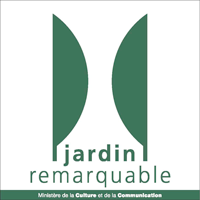The Donjon de Vez presents a collection of fifteen significant works of modern and contemporary art. It offers an overview of the representation of women, as sculpted by artists such as Aristide Maillol, Niki de Saint Phalle, Manolo Valdés, Antonacci Volti, Salvador Dalí, Germaine Richier, Robert Couturier, Jeff Koons, John de Andrea, Antoine Bourdelle and Emmanuel Frémiet, using various materials (bronze, stone, resin, metal...).

Aristide Maillol (1861-1944) Vénus sans bras, 1922 (Bronze) Private Collection
For centuries, from Antiquity to the end of the 19th century, female sculptures populated gardens, churches, public squares, and interiors. Often, their bodies were an allegory of love and war, to magnify history or in reference to ancient times.

John de Andrea (b. 1941), Katie (Seated), 1998, Private Collection particulière
Starting from the early 20th century, women emancipated and strengthened, and artists accompanied this evolution by transforming their representation according to their thoughts, new materials, and their travels around the world. Moreover, the successive arrival of photography and cinematography further evolved the clichés related to beauty.

Robert Couturier (1905-2009), La Savonnette, 1994 (Bronze), Private Collection
While Niki de Saint Phalle’s colorful "Nanas" anticipated feminist liberation movements, the sculptures of virgins in churches remain imprisoned in a profoundly reductive role of motherhood. If Jeff Koons, through pink metal balloons, testifies to his vision of women through the prism of a modern-day Venus, Maillol sublimates their forms and cuts their arms in a clear reference to the Venus de Milo. Finally, when Manolo Valdés showcases his Meninas at fashion week in echo of Velázquez’s, John de Andrea, the great American hyperrealist sculptor of the 70s, works on flesh tones as the central element of attention.

Germaine Richier (1902-1959), Diabolo, 1950 (Bronze), Private Collection
Thus, whether they are naked or draped; in swimsuits or robes; made of bronze, resin, polyvinyl, or plaster, they all are, as Baudelaire wrote: "Belle, ô mortelle, comme un rêve de pierre" ("Beautiful, o mortal, as a dream of stone.")



